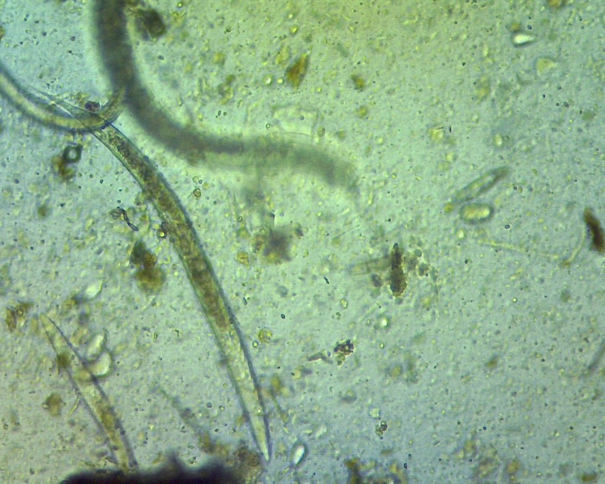
Comfrey
Symphytum officinale
Borage family (Boraginacecae)

Comfrey basal rosette
Borage family (Boraginacecae)
Energetics: Cooling, moistening
Taste: not applicable (see cautions about internal use)
When to harvest: Aerial (above-ground) parts - spring to fall; roots in fall or early spring
Identification: Comfrey is a perennial plant that often grows in damp, riverside areas or urban ‘waste’ areas, but is quite resilient and can tolerate various conditions. It can have a wide berth of up to 75cm across, and can reach up to 90cm tall. Comfrey leaves initially grow from one point in the ground before sending a stalk up to flower, and the leaves have a smooth edge. This is an important distinction from foxglove, a toxic plant that looks similar when not in flower, but has serrated leaf edges. Comfrey also has bristly ‘hair’ on the leaf and stalk that can be prickly, but doesn’t sting. Flowering happens at the stalk tip in a spiral, and can be white or pale purple/blue.
Also referred to as knitbone.


Comfrey is a deep rooted perennial plant (the same plant regrows every year), whose roots draw up minerals and nutrients into the aerial parts. This is why gardeners often use it as a fertiliser — chopping and leaving it on soil to enrich as it breaks down; adding to the compost heap to enrich; or soaking in water for a few weeks to make a concentrated fertiliser.
Medicinally, comfrey root, and to a lesser extent comfrey leaf, contains allantoin, which promotes generation of new cells, and rosmarinic acid, which alleviates pain and inflammation (Healthline, n.d.). The root, when dried and powdered, makes a nice plaster when mixed with water into a paste - this can then be applied to the skin.
Connective tissue healing
- Helps to heal cuts and wounds quickly, and for this reason should not be used on deep wounds or dirty punctures or wounds, lest it heals the wound while infection is still present
- Heals burns
Pain relief & inflammation modulation
Comfrey is used externally for shallow cuts; sprains; muscle and joint aches; broken bones (after properly set). It contains a substance called allantoin, which stimulates cell production, and thus healing, and the rosmarinic acid alleviates pain.
Plant preparations
Internal (see precautions below)
- Nourishing infusion of leaf
- Edible - leaf
External
- Infusion of leaf for bath or compress
- Decoction of root for bath or compress
- Oil or salve of leaf or root
- Poultice of leaf or root
Cautions
Comfrey contains pyrrolizidine alkaloid (PA), a substance that can cause liver damage if taken internally. The PA is most concentrated in the root, which contains 10 times as much as the above-ground parts (Avila, 2019). It is also more prevalent in Russian comfrey than in common comfrey, but because comfrey hybridises, it’s difficult to identify the variety.
There have been five cases of damage in people consuming comfrey, all of whom who either had underlying poor nutrition or illness or were taking medicines that can be toxic for the liver (Avila, 2019). Nonetheless, it’s good to be aware of the issue of PAs. Some people do take it internally periodically or for a short period of time only under the guidance of a qualified herbalist or other knowledgeable health professional. Some people also make fritters from fresh comfrey leaf or occasionally drink a strong infusion of comfrey leaf.
